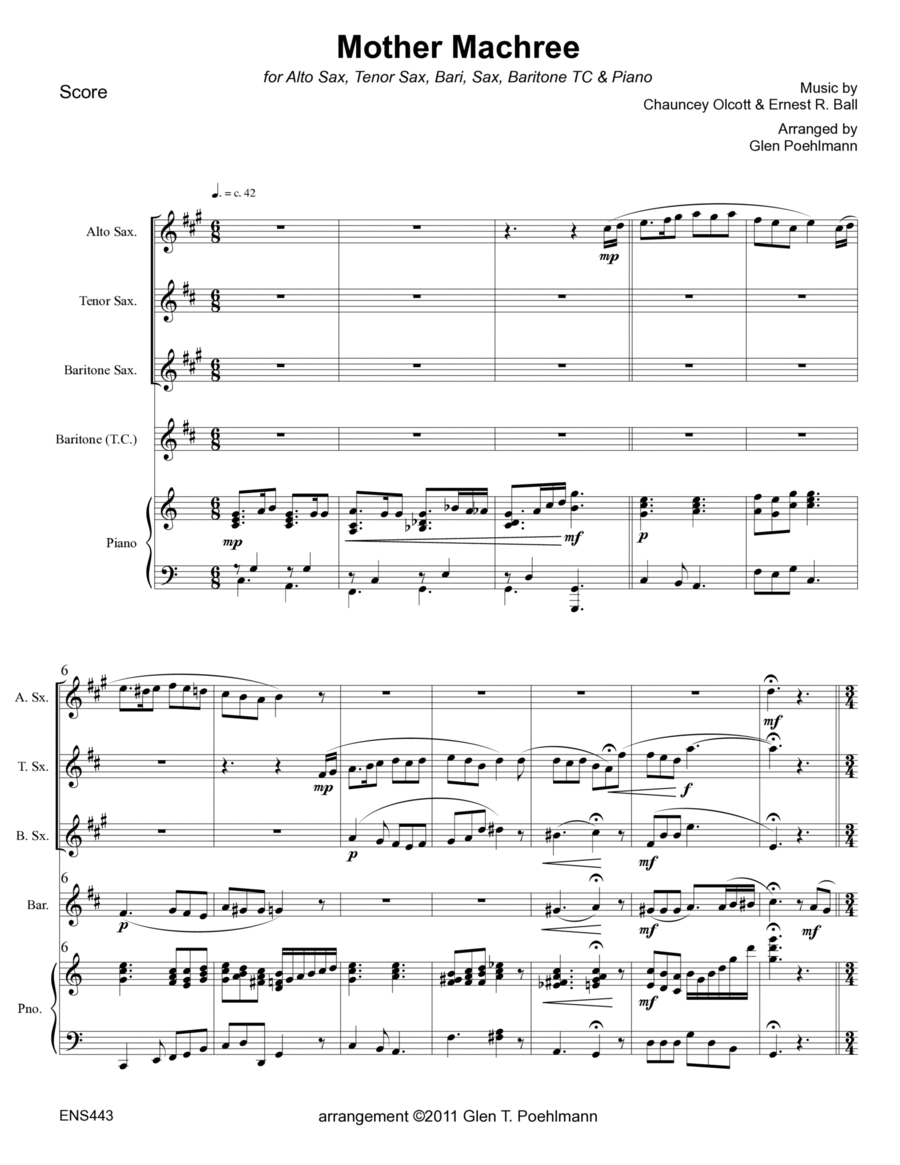Saxophone Quartet,Woodwind Ensemble Alto Saxophone,Baritone Saxophone,Tenor Saxophone - Level 3 - Digital Download SKU: A0.1074135 Composed by Ernest Ball. Arranged by Glen Poehlmann. Broadway,Celtic,Film/TV,Irish,Musical/Show,Standards. 13 pages. Arrangements by GPoehlmann #678417. Published by arrangements by GPoehlmann (A0.1074135). MOTHER MACHREE (1910 American-Irish Song) for Alto Sax, Tenor Sax, Baritone Sax and Baritone TC (or Trombone or Tenor Sax 2) with Piano accompaniment Medium in Difficulty (Grade 3) 65 measures. Performance Time approx 2:30 Key: C. Meter:3/4 - 6/8 Instrument Ranges (C4=middle C) Alto Sax F#4 - E6 (written) Tenor Sax D4 - E6 (written) Bari Sax A3 - E6 (written) Baritone BC C3 - G4 (or Trombone) Baritone TC/Tenor Sax 2 D4 - A5 (written) Includes (PDF): Score, Alto Sax, Tenor Sax, Baritone Sax, Baritone BC/Trombone, Baritone TC/Tenor Sax 2, Piano,.
